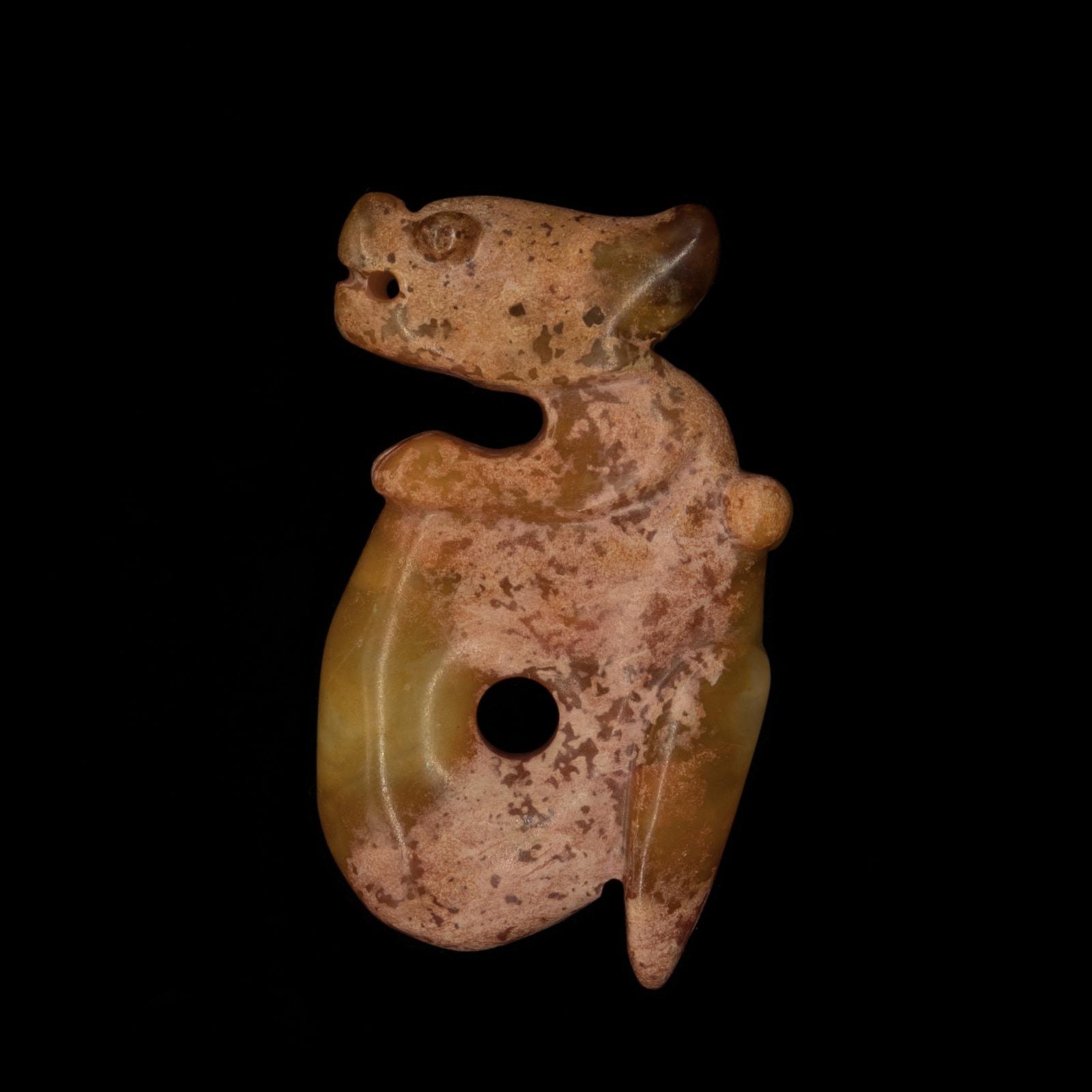Hongshan-Style Jade Pendant of Pig Dragon, 1644-1912 CE
Jade
7.2x4.2 cm
ES.1799
This exquisite example of a jade pendant has been skilfully carved in the shape of a coiled pig dragon in the style of Honshan Culture jades. The mythical animal presents...
This exquisite example of a jade pendant has been skilfully carved in the shape of a coiled pig dragon in the style of Honshan Culture jades. The mythical animal presents a circular aperture to the centre. The stone is of a green hue with some areas of white alterations.
In China, during the Neolithic period, jade was shaped into ceremonial, symbolic and decorative items. Hongshan jades are usually found in graves, where they were placed as a rare and precious commodity that indicated the status of the deceased. They are generally pierced with holes for suspension or for attachment to textiles or some other material and probably represented personal ornaments.
In China, during the Neolithic period, jade was shaped into ceremonial, symbolic and decorative items. Hongshan jades are usually found in graves, where they were placed as a rare and precious commodity that indicated the status of the deceased. They are generally pierced with holes for suspension or for attachment to textiles or some other material and probably represented personal ornaments.
